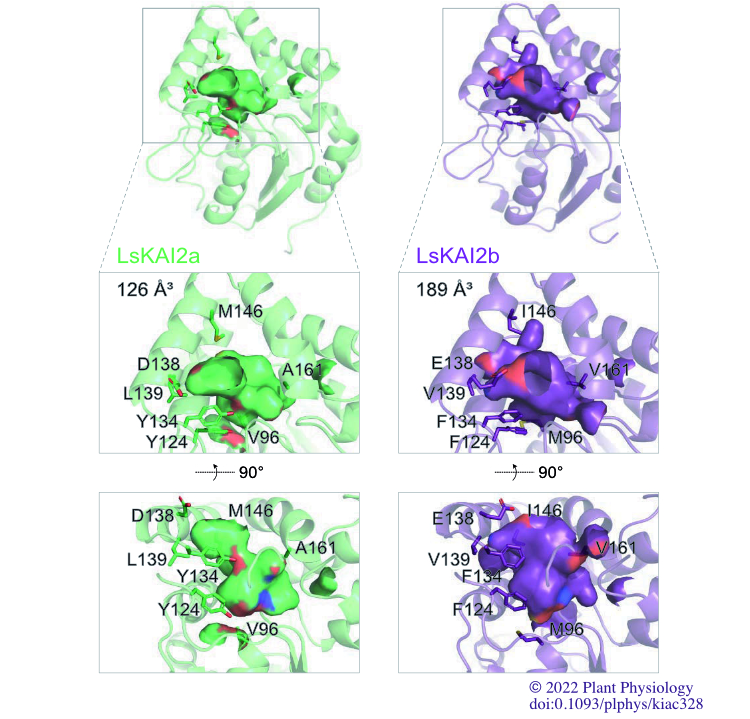
OA †Martinez SE, Conn CE, Guercio AM, Sepulveda C, Fiscus CJ, Koenig D, Shabek N, Nelson DC. (2022) “A KARRIKIN INSENSITIVE2 paralog in lettuce mediates highly sensitive germination responses to karrikinolide.” Plant Physiology. 190(2), 1440-1456.
In 2015, we had discovered how parasitic plants are able to sense strigolactones from a host and germinate. This adaptation arose from duplication and neofunctionalization of the KAI2 receptor to sense strigolactones instead of their usual signals (i.e. KAI2 ligand). In this study, we investigated the flip side of the coin: how have some plants become highly sensitive to karrikins? In this project, led by former undergraduate Stephanie Martinez, we began by examining how lettuce achenes, which are very sensitive to KAR1, are likely to perceive karrikins. The lettuce genome contains two copies of KAI2, one of which is preferentially expressed in achenes. Introducing this version of lettuce KAI2 into Arabidopsis thaliana as a transgene makes the plants very sensitive to KAR1. We used structural and evolutionary comparisons to examine what changes in the ligand-binding pocket of KAI2 may be responsible for increased sensitivity to karrikins. As part of this comparison, we identified the KAI2 sequences in a native California plant known to follow fire, Emmenanthe penduliflora. Ultimately, we narrowed our focus to four amino acids in the ligand-binding pocket of KAI2, which appeared to be co-evolving among two major classes of KAI2 proteins in asterids. By switching up these four pocket residues in different combinations, we were able to create a range of different responses to KAR1, KAR2, and GR24 in the Arabidopsis KAI2 protein. We predict that changes at some of these positions were an important step in the evolution of increased karrikin sensitivity for some fire-following species, but we will need to survey more of these species to find out.
